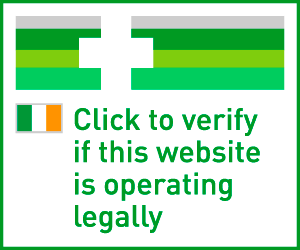Infants can develop many types of skin conditions shortly after they are born; with three of the most common skin problems affecting infants being nappy rash, eczema and cradle cap. Below is a run through of each of these conditions, along with advice and product recommendations that can assist with both treatment and prevention of these conditions.
Eczema
Eczema and dermatitis are often used interchangeably to describe several conditions that cause the skin to become dry, itchy, inflamed or irritated. There are a number of different types of eczema but the term is most often used to refer to atopic eczema (also called atopic dermatitis). Atopic eczema is a very common, non-contagious chronic inflammatory skin condition which usually starts in infancy, affecting up to 20% of children. Approximately 80% of children affected develop it before the age of 6 years. Although it can settle in late childhood and adolescence, the prevalence in young adults up to 26 years of age is still 5–15%.
The exact cause of eczema is unknown. Researchers do know that children who develop eczema do so because of a combination of genes and environmental triggers. It has been found that children who come from families with a history of atopic dermatitis, asthma, or hay fever (known as the atopic triad) are more likely to develop atopic dermatitis.
Infants with atopic eczema usually have periods when symptoms are less noticeable, as well as periods when symptoms become more severe (flare-ups). The likelihood of flare-ups can be reduced by identifying and avoiding common triggers of eczema. These may include:
- Clothing - Babies should be dressed in lightweight clothing, avoiding harsh synthetic materials and wearing cotton where possible.
- Heat - Bedrooms should be kept cool as heat and sweating can exacerbate and trigger eczema.
- Detergents and Soaps - Use a sensitive, non-biological washing powder when washing baby’s clothes/sheets/blankets etc. Soap free products should be used when bathing.
- Homes – these should be kept clean and clear of dust, mould, damp and animal hair as these are all potential triggers for eczema. Avoid having anybody smoke in the home.
Symptoms of eczema include red, dry skin, which can sometimes weep, become blistered, crusted and thickened. Although atopic eczema can affect any part of the body, it most often affects the hands, insides of the elbows, backs of the knees and the face and scalp in infants and children.
The main symptom of eczema however is the itch, which may cause disturbed sleep and irritability. While there is no cure for eczema, treatment can help to relieve the symptoms and many cases improve over time. The type of treatment a baby needs depends on the severity of their symptoms.
For mild eczema, a moisturising cream/emollient should be applied to the skin at least twice daily. Moisturisers should be gently smoothed in rather than rubbed. If using after a bath, the cream should be applied to the babies skin while it is still damp. Examples of suitable moisturisers include Child’s Farm Baby Moisturiser and La Roche-Posay Likipar Balm AP, which is safe to use on new-borns. Other alternatives include aqueous cream and silcocks base, which can double up as a substitute for soaps.
Steroid creams or ointments can be used to control flare-ups, when the skin is red and itchy. These creams should only be applied to the areas of skin that are affected and only while the flare-up is present. Hydrocortisone 1% can be used for milder flare-ups. Occasionally, a stronger steroid cream will be required which must be prescribed by a doctor. If using a steroid cream, this should be applied first, with the emollient applied as the top layer.
Anti-histamines can sometimes be given, particularly if the itch is affecting the infant’s sleep.
Occasionally, infections develop on top of an eczema rash. If the rash presents with any yellow-coloured crusting and scabbing, oozy skin, blisters or pus the infant should be referred to a GP who will most likely prescribe an antibiotic. Babies fingernails should be cut short to minimise damage from scratching and reduce the risk of infection. Parents could also be advised to put cotton gloves or socks on the infant when sleeping.
Nappy Rash
Nappy rash is one of the most common skin conditions in infants, thought to affect up to a third of nappy-wearing babies at any given time. It occurs most often in babies aged 3-15 months. Nappy rash can mean anything from slight redness on your baby’s bottom, to a full scale breakout of sore blisters and pimples.
Nappy rash can be caused by a number of factors, including a combination of excess moisture, warmth, urine, faeces and friction in a baby’s nappy. Babies with sensitive skin and pre-existing skin conditions such as atopic eczema or dermatitis are more prone to developing nappy rash.
Most nappy rashes are mild and babies will usually feel no pain or discomfort. However, some nappy rashes are more severe and can be caused by a fungal or bacterial infection. The symptoms of the rash will vary based on its severity.
If a child has mild nappy rash, a small part of their nappy area will be covered in a pink or red rash, usually made up of small spots or blotches. However, they should feel well and will only experience a stinging sensation when passing urine or faeces. Mild nappy rash can usually be treated with a simple skin care routine, which includes applying a thin layer of a barrier cream at each nappy change to protect the baby’s skin. Barrier creams available include; Bepanthan Ointment, Sudocrem Care and Protect and La Roche Posay Cicaplast Baume B5.
The following steps will also help to clear mild nappy rash and prevent further reoccurrences;
- Wet or dirty nappies should be changed as soon as possible.
- The whole nappy area should be cleaned gently but thoroughly, wiping from front to back. Water or fragrance-free and alcohol-free baby wipes should be used.
- The baby’s skin should be dried gently after washing them – vigorous rubbing should be avoided.
- Nappies should be left off for as long and as often as possible to let fresh air get to their skin.
- Soap, bubble bath or lotions should be avoided. Talcum powder should not be used as it contains ingredients that could irritate a baby's skin.
For more severe nappy rash, a mild topical steroid such as hydrocortisone cream may be recommended or prescribed. In this case, a thin layer should be applied, prior to applying a barrier cream, until the rash has cleared. Steroid creams should not be used for longer than 7 days.
Fungal nappy rashes may occur when the skin is in prolonged contact with faeces and urine, as this can create a perfect environment for the growth of the yeast Candida. Symptoms of a fungal nappy rash include severe, bright red elevated patches with fine peripheral scale in the nappy region, especially in the skin folds around the groin and tops of the thighs. There may also be a presence of Vesicles (like a small, raised cyst or fluid-filled blister) and pustules around the rash. Fungal nappy rash will usually last three days or more, despite home treatments. In this case, a topical antifungal cream would be recommended. Examples of over the counter anti-fungal creams include Canesten Cream (1% Clotrimazole) and Daktarin Cream (2% Miconazole). Antifungal creams should be used until the rash has cleared and for 7-10 days after.
In some rare cases, a nappy rash can become infected with bacteria. This can make a baby’s skin significantly more painful and can be distressing for them. Symptoms of a bacterial infection can include: irritated and reddened skin, a collections of pus (which may ooze) and/or lesions (areas of damaged tissue). A bacterial infection usually requires treatment with antibiotics, which will be prescribed by a doctor.
Cradle Cap
Cradle cap is the name given to seborrhoeic dermatitis that affects the scalp in babies and young children. Cradle cap appears as yellowish, greasy scaly patches. It is a very common, harmless condition that does not usually itch or cause any discomfort to the baby.
Cradle cap is seen most commonly in babies during their first three months and tends to last a few weeks or months. It usually clears up by the time the child is two years old, although in rare cases children can have cradle cap for a lot longer.
The cause of cradle cap is not clear, although it may be linked to overactive sebaceous glands, which are glands in the skin that produce an oily substance called sebum. The excess sebum causes old skin cells to stick to the scalp, instead of drying up and falling off as they would normally do. Research has found that babies who get cradle cap often have family members with allergy-type conditions, such as asthma and eczema. There is also a possibility that a child who has cradle cap may have other types of seborrhoeic dermatitis, such as dandruff, when they are older.
Symptoms of cradle cap include:
- greasy yellow patches on the scalp
- the affected skin area appears red
- scales and flakes on the scalp
- yellow crusts on the scalp
Cradle cap is usually not pruritic and infants are otherwise generally well. Cradle cap requires no specific treatment, and will eventually clear up on its own. However, gently washing the baby's hair and scalp may prevent a build-up of the scale.
To loosen the crust, a small amount of oil such as olive oil or coconut oil can be massaged into the scalp and left on for 30 minutes. A soft baby brush or cloth can be used to gently remove any loose particles. Following this, the hair should be washed with a mild baby shampoo which will help to remove any scales that remain attached to the scalp.
Alternatively, a special shampoo, e.g. Capasal therapeutic shampoo, can be used to treat the cradle cap. Capasal shampoo contains salicylic acid, coconut oil and distilled coal tar. These active ingredients loosen and detach scales from the scalp, moisturise and soften the scalp, relieve itching and help restore skin homeostasis. To use, a small amount of the shampoo should be massaged into the scalp and left for a few minutes. As much of the lather as possible should be removed with the hands as this will take the scales with it. The hair should then be rinsed.
If the cradle cap becomes inflamed or infected, a course of antibiotics or an antifungal cream or shampoo, such as ketoconazole, may be prescribed by a doctor. They may also prescribe a mild steroid cream such as hydrocortisone for an inflamed rash.
Cradle cap is benign and self-limiting. It usually resolves without intervention over the course of weeks to several months. If it persists beyond 12 months, the diagnosis should be reconsidered and patients should consult with their GP.
If you have any questions regarding these infant skin conditions, our team are here to help and advise as much as we can. You can contact our helpline on 01 485 3098 or email help@meagherspharmacy.ie for advice.



